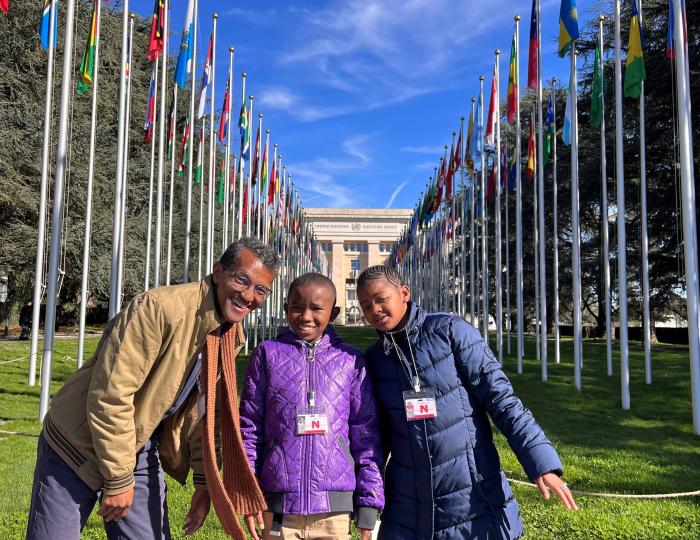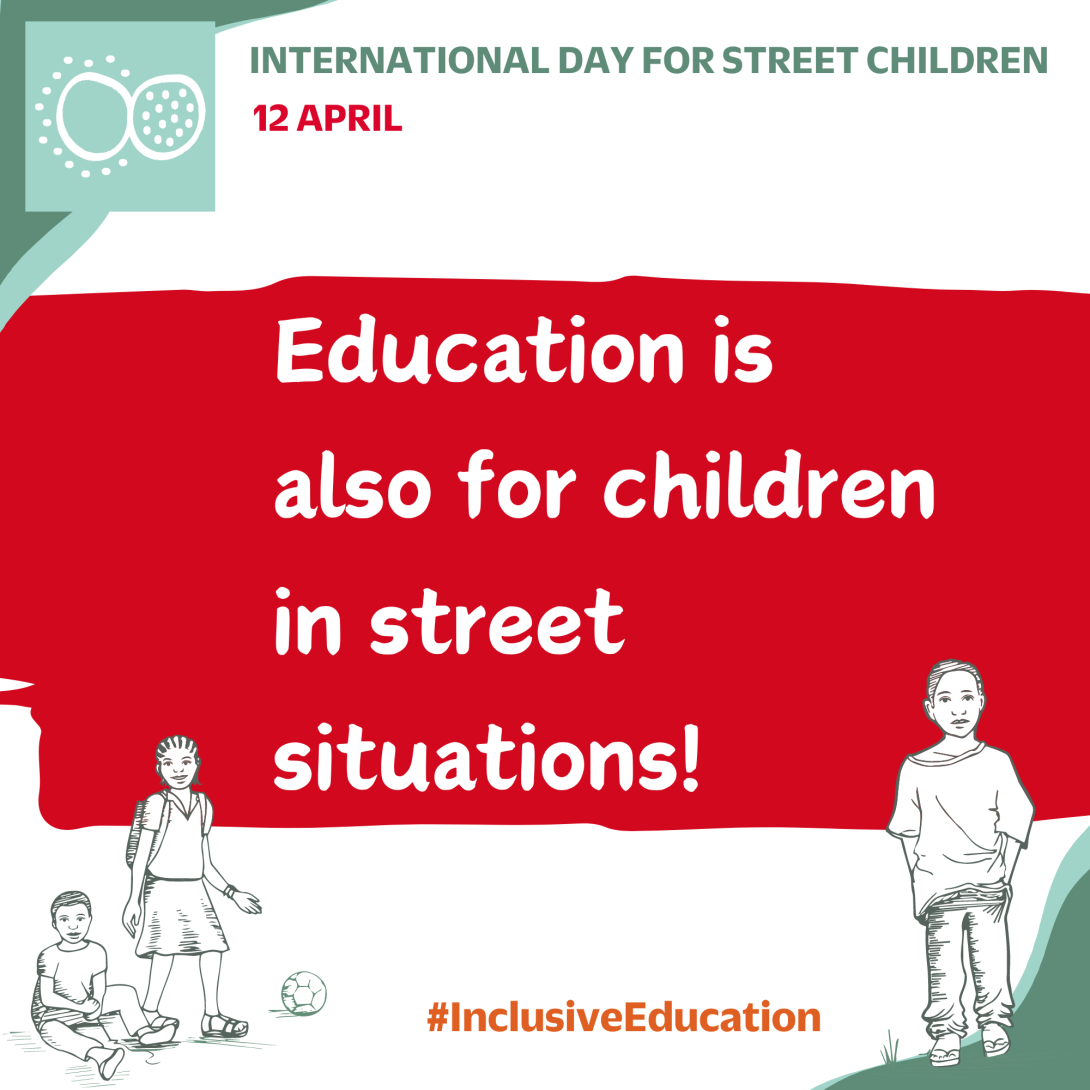
There are currently 244 million children in the world who do not attend school1. This figure is a reasonable approximation of the scale of the phenomenon of children in street situations*. They are ignored by the education system. And yet, like all other children, they have the right to free, quality education. Read more about our solutions here.
Our campaign kicked off on 12 March with our panel discussion "Ensuring access to education”, held in Geneva and broadcast online. Ronaldo and Elia, two children who have lived on the streets of Madagascar, came to talk about their experiences. In total, there were 110 people in Geneva and over 600 listening online:
Solutions do exist to provide street-connected children with an education, it's urgent to act!
Education is also for children in street situations! #InclusiveEducation
1. A comprehensive policy for children in street situations
More and more children are dropping out of school and ending up on the streets. The World Bank has declared 2023 to be the year of inequality, with an increase in poverty, particularly in the poorest and most vulnerable countries2. In most countries, children in street situations receive no help from the State: very few countries have created a policy for them.
They are very marginalised and their rights are not respected, particularly in terms of their access to education or health. They need special attention and targeted action to access their rights!
We recommend that governments develop, in collaboration with civil society, a comprehensive and integrated policy for children in street situations to support them in accessing their rights, particularly education.
2. Invest in education
The COVID-19 pandemic has had devastating effects on education, causing learning losses in 80% of the world's countries3. Without State investment, education systems are failing and are inaccessible for children in precarious and street situations. There is a shortage of qualified teachers and schools, especially in disadvantaged neighbourhoods, classrooms are overcrowded and teaching materials are inadequate. In many countries, getting an education means paying school fees, uniforms and sometimes even teachers' salaries. All this is out of reach for children in precarious situations. Making school accessible to street-connected children is only possible by increasing the number of teachers, basic school infrastructure, a canteen system and extra-curricular activities.
We recommend that governments set education funding as a national investment priority, make education free and compulsory, increase the number of teachers, provide a canteen service, and improve basic school infrastructure.
3. Remove administrative barriers
Often, it is because school is inaccessible that children find themselves on the streets because there is no alternative. Many administrative barriers stand in the way of these children getting to school: having a birth certificate is often a prerequisite for enrolling in school or taking exams. However, according to UNICEF, 1 in 4 children under the age of 5 is not registered4.
School represents a lack of investment and a loss of earnings for families and children in precarious situations. Working becomes the only alternative. Today, 160 million children in the world are working5. Getting these children into school is made possible by supporting families in precarious and street situations.
We recommend that governments remove barriers for access to education by making it easier to obtain birth certificates for children who are not registered with the civil registry and by adapting state school enrolment procedures in terms of administrative requirements and age.
4. Set up educational alternatives
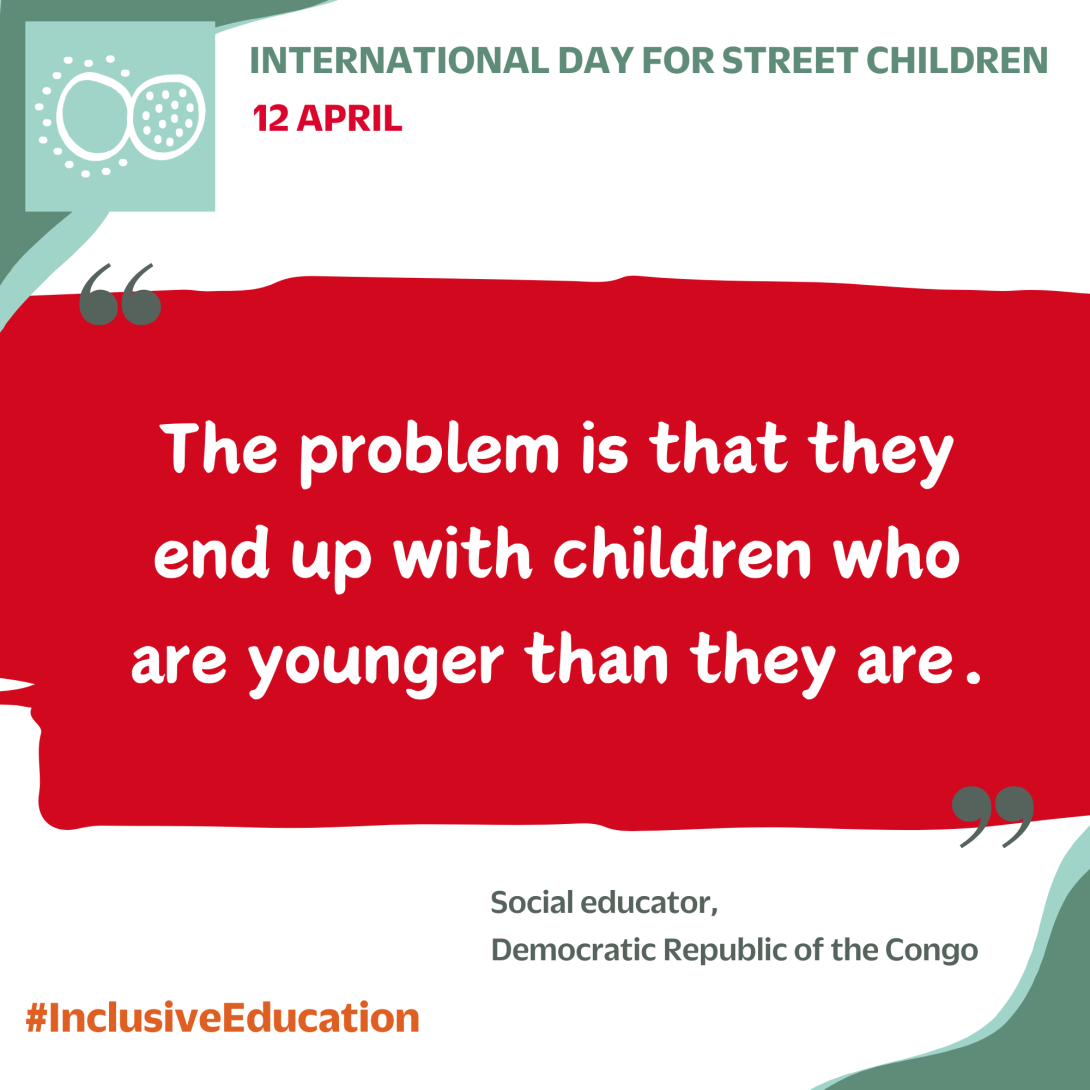
Without the support of external players, such as civil society, getting them back into education is an impossible task for street-connected children. The education system generally does not offer these children any facilities to help them catch up. A child who wants to start or return to school has to join a class whose average age is much lower than his or her own. This often results in the school refusing admission or dropping out.
Without teaching methods adapted to their reality, young people become discouraged and struggle to make progress to reintegrate into the system. Even more so as the learning process for these children is sometimes more complex due to traumatic episodes, financial difficulties and family problems.
We recommend that governments set up educational alternatives such as intermediate refresher classes with teaching methods adapted to the needs of children in street situations and working with civil society to build bridges between informal and formal education.
5. Combat stigmatisation
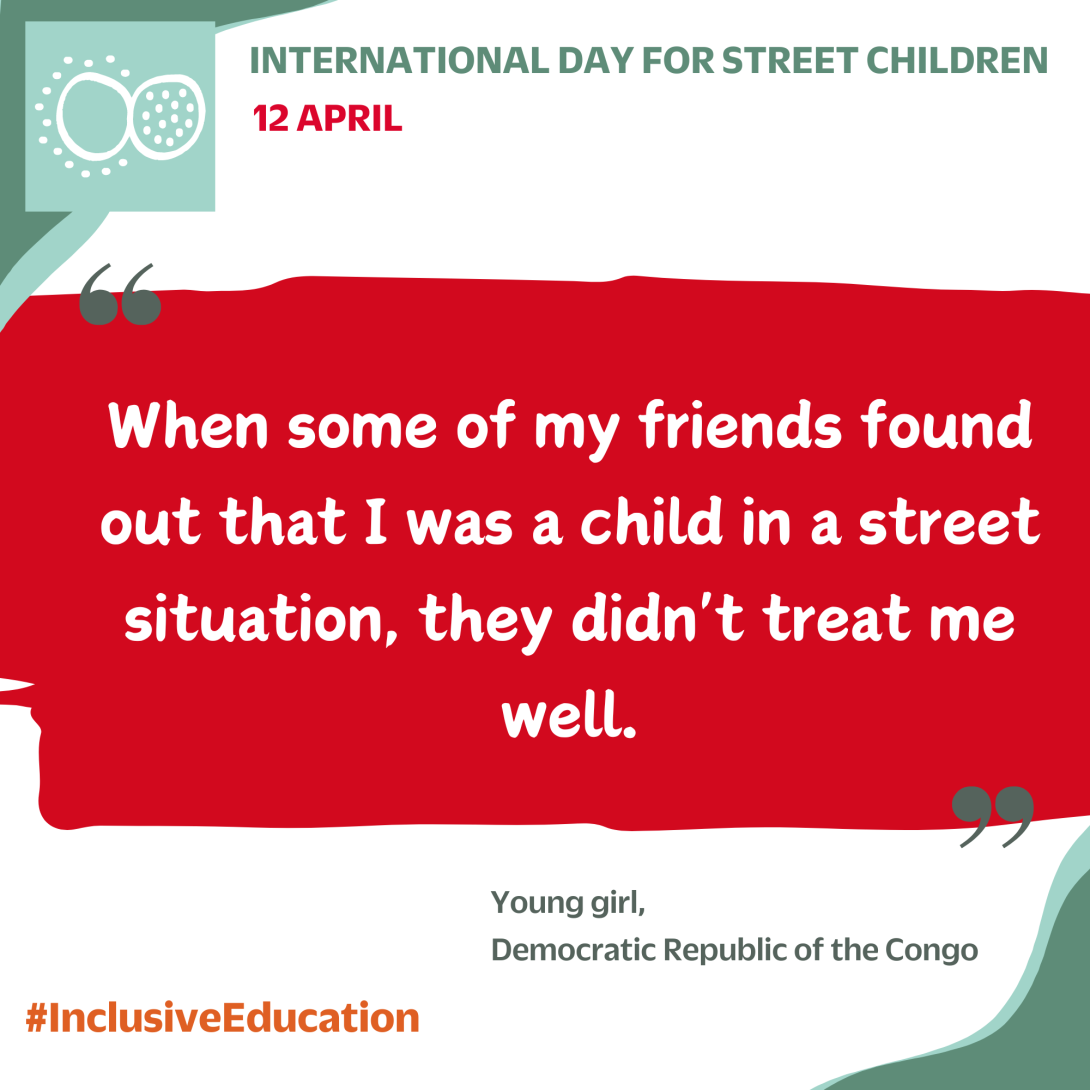
When children in street situations are able to return to school, they are very often discriminated against and stigmatised on a daily basis at school, by their classmates and by their teachers. These children are generally excluded from society and perceived as delinquents. Unfortunately, this discrimination persists in the education system and in schools. Fortunately, there are many tools available to help children flourish in our societies:
Training teachers and raising schoolchildren's awareness of the rights and realities of street-connected young people is an effective way of combating stigmatisation. This not only helps them to integrate, but also to succeed at school!
6. Adapt professional training
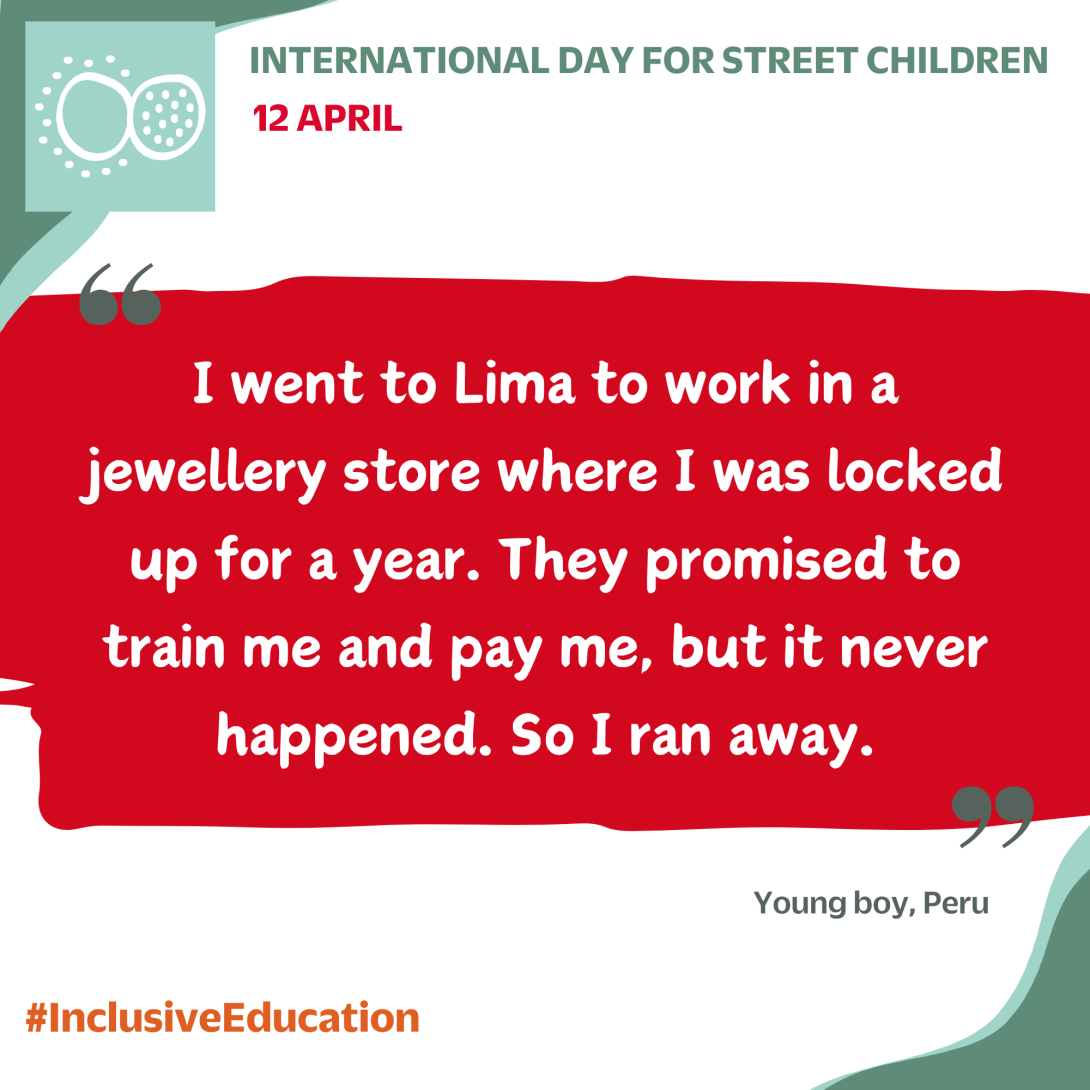
Vocational training represents a fantastic opportunity for young people in street situations to reintegrate into society. However, it is very difficult to get into public training without an official qualification: having the required level of education is not enough! The vocational training provided by civil society for these young is often not recognised by many States, depriving them of any higher or technical education.
There are several ways of tackling this problem. It is essential to adapt the conditions for admission: to relax the age limits, the educational certification requirements and to recognise previous training provided by other bodies. It is also essential to recognise the professional experience already acquired by these young people, to enable them to access State programmes.
We recommend that governments adapt vocational training by making access conditions more flexible, and recognise training and diplomas issued by other bodies such as civil society to encourage the integration of these young people.
Sources :
1UNESCO. 244M children won’t start the new school year. 2022
2The World Bank. 2023 in nine Charts: A growing Inequality. 2023
3UN. Goal 4: Ensure inclusive and equitable quality education and promote lifelong learning opportunities for all. 2024
4UNICEF. Despite significant increase in birth registration, a quarter of the world’s children remain ‘invisible’. 2019
5ILO. Child labour rises to 160 million – first increase in two decades. 2021
